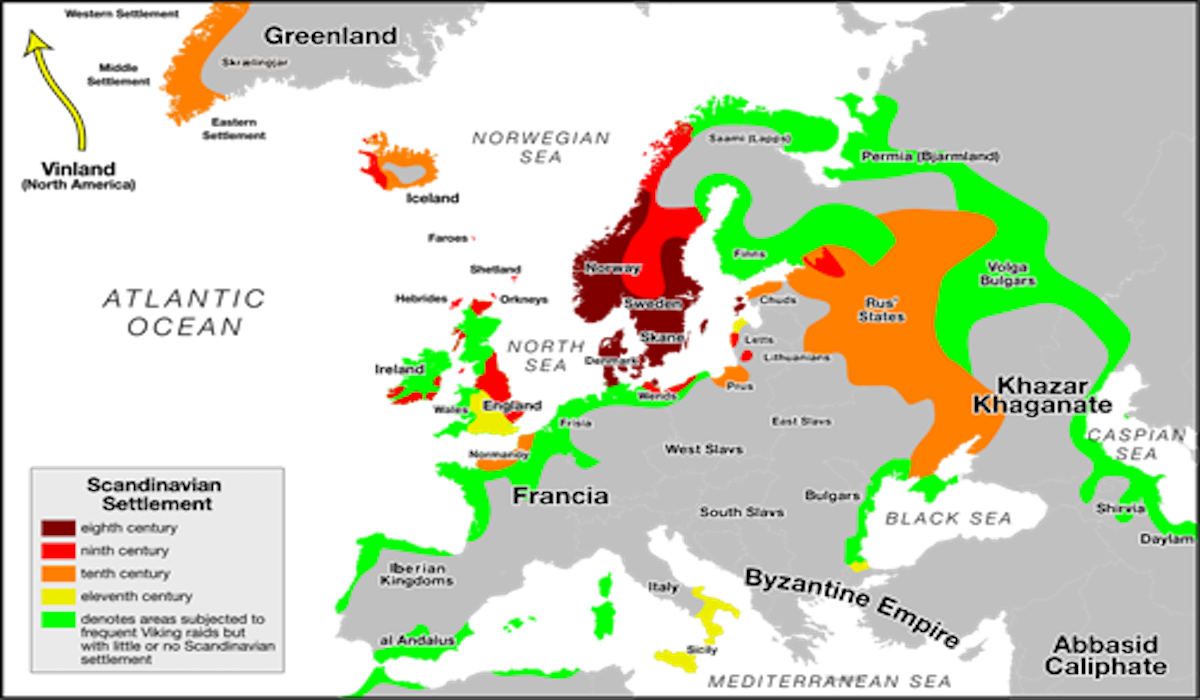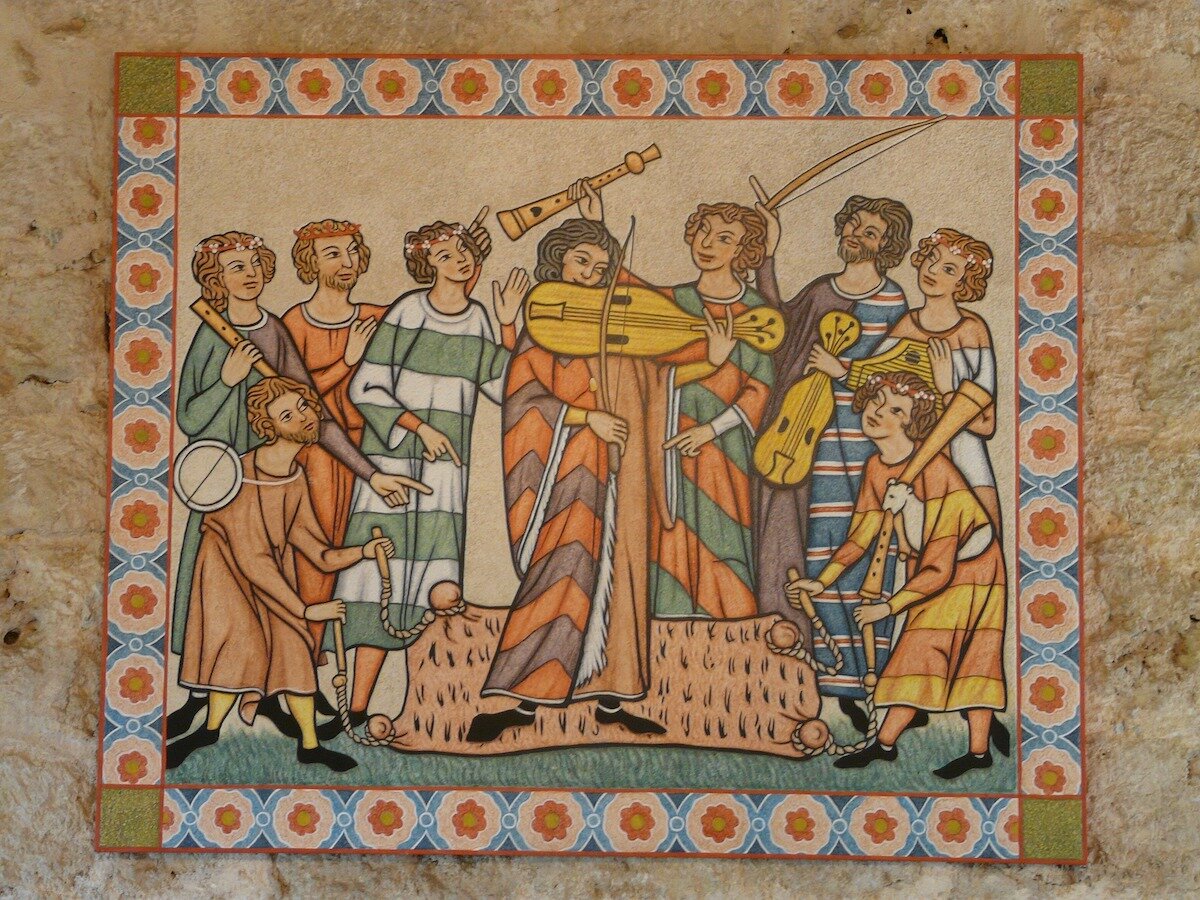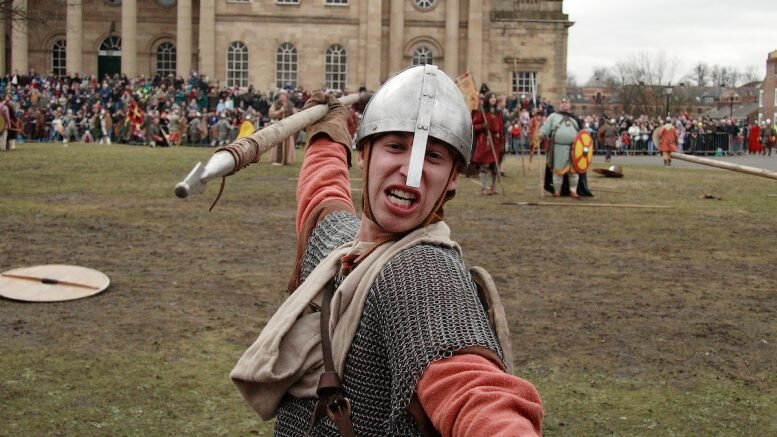Vikings, it seems, have been getting bad press for centuries. Open any history book or website and it will be full of tales of looting, pillaging, violence, and rape. Although these seafaring Scandinavians took to the seas and raided much of modern-day Europe, Russia, and the Near East, were they really so bad? Were the Vikings really any worse than other peoples who lived in the relatively and anarchic ‘Dark Ages’ of Europe from the 8th to 11th centuries CE?
A rough time to grow up…
A huge part of tourism campaigns in Norway, Sweden, and Denmark is promoting (and cashing in on) the Vikings. These were a seafaring people, originating from the Scandinavian peninsula, who raided, traded, and settled throughout many parts of Europe and beyond. From Canada to Russia, from Iceland to Sicily, many villages, towns, and cities have a historical link to either being raided or settled by or having trade links with, the Vikings.
The so-called ‘Viking Age’ was perhaps heavily influenced by the fall of the Roman Empire. Huge swathes of populations moving, from the Eurasian Steppe to Europe, may have been one of the factors in the fall of the Roman Empire. The heavily formalized and integrated structure of the Roman Empire was shattered into a thousand pieces. It was this period of anarchy were there was little or no overriding central authority or control that the Vikings first emerged and then thrived. Put simply, areas in France, Italy, Spain, or England which had Roman legions before now only had whatever local militia could be cobbled together.
Yet all hope was not lost. Instead of a centralized authority like the Roman Empire, small kingdoms, principalities and states started to emerge. Charlemagne did much to try and replicate the Roman Empire by stringing together a lot of what is now Western Europe under his rule. Cities began to emerge as the preeminent place for trade and slowly Roman trade links began to be traversed again.

Trade and treasure
Just why exactly peoples on the Scandinavian peninsula took to the seas, trade, and raid and settle, from the 8th to 11th centuries CE, is still part of a heated and ongoing academic discussion. A recent theory speculates that unmarried Viking men may have set out to seek women as either wives, slaves, or both.
It may also have been convenient for many Viking rulers to send significant numbers of men away thus decreasing the chance of bloody competition. Not only could sending any possible competitors have been good for any local Viking chief or king, but the acquisition that these men made (through plunder) of gold, loot and treasure would only reinforce the power of the ruler.
Some trade links, which had been severely devastated by the fall of the Roman Empire, had also started to emerge once again. The Vikings, from their position in Northern Europe, were placed perfectly to exploit the lucrative overland trade from Asia (think furs, spices, and silver), for example what is modern-day Russia. Using the rivers, oceans, and seas surrounding the European continent – and their efficient longboats – they were able to set up trading posts from Dublin to the River Don. Their trade included the mighty Byzantine Empire, the preeminent economic and military power of the time.
They came, they saw… They settled
A key part of the Viking Age was their expansive settlement and colonization. We already know that the Vikings had established a short-lived settlement on the North American continent (at L’Anse aux Meadows, in present-day Newfoundland, Canada) some five centuries before Christopher Columbus arrived in America. Yet they were also responsible for settlements in modern-day Iceland, Greenland, huge swathes of Ireland, England, and Scotland while also settling the Orkney and Shetland Islands.
The Vikings that settled abroad were mostly families involved in commerce or farming. The Vikings often did raid these areas first, but then came back in significant numbers and became an integral part of societies in these locations. The classic example is the ‘Dane Law’ area of England. A diagonal line stretching from England’s current border with Scotland to London was drawn where Viking settlers had first raided, then settled, then absorned areas into Viking communities. The Viking presence is still felt with many English villages and towns possessing names of a Scandinavian origin. Though they did raid and terrorize originally, the Vikings soon became settled farmers and merchants.
Bad press since the 9th century
The stereotype of the bloodthirsty Vikings, showing up on the longboats, pillaging, plundering, and raping innocent locals throughout Europe has been fostered since the 9th century CE. Much of the history of Vikings has been passed down through the ages from reports by Islamic or Christian scholars. As many of their communities were often affected by Vikings’ raids, they were perhaps not the most subjective historians.
Yet were the Vikings really any more bloodthirsty or vicious than other peoples? The Byzantine Empire frequently conquered and clashed with peoples around the Mediterranean and Near East. The Abbasid Empire, the mighty Islamic Empire of this age, conquered and subjugated people from Cordoba in the West to Pakistan in the East. Violence, rape, pillage, destruction, and death were often an everyday part of this era. There is no reason to believe that the Vikings were more violent than other kingdoms or empires, just that their maritime ‘blitzkrieg’ was often unexpected – and different.
History, in this case, was not written by the ‘winners’ but by the people most affected by these raids. Or, it was written not until decades and centuries later in texts such as the Icelandic sagas.

Swords for hire: Reinforcing a myth
Aside from the settlements, the colonization of unknown lands, and the role that they played in intercontinental trade, the Vikings were also known as being mercenaries. Many Vikings became employers of various empires and kingdoms surrounding the Mediterranean basin. Probably the most famous example of this is the ‘Varangian Guard’ which was employed by the Byzantine Empire. Originally, this was a group of Viking soldiers who protected the Emperor, likely exclusively drawn from Viking raiders.
Some Vikings becoming ‘swords for hire’ throughout various Christian and Islamic lands helped perpetuate the myth that all Vikings were inherently bloodthirsty and violent. Many of these Vikings were young men who needed a job or wanted adventure. Becoming a mercenary was, perhaps, the only meaningful form of employment that many men in Scandinavia, during this time, could gain.
Vikings: So much more than bloodthirsty raiders
The Vikings were so much more than the historical stereotype than has been passed down to us for over a millennium. Yes, many did raid, kill, pillage, and rape their way across huge swathes of the Eurasian landmass. They terrorized many communities before sometimes establishing themselves as rulers (think of King Canute’s North Sea Empire, which encompassed parts of Scandinavia, the United Kingdom, and Ireland). They lived in an often violent and anarchic time where the power of the sword was often the chosen way to exert authority and uphold governance.
However, though the Vikings did initially arrive on many shores as pillagers and raiders, they eventually became settled farmers, traders, and rulers. A significant amount of these people were not involved in any deadly violence but were more focused on growing crops, trading furs, or establishing communities.
The Vikings have been getting a bad rap for over a millennium. It is time to rethink this – and many scholars already are, with a paradigm shift in the way we view Vikings. They were, after all, only about as bad as their neighbors.
Source: #NorwayTodayTravel
Do you have a news tip for Norway Today? We want to hear it. Get in touch at [email protected]





Be the first to comment on "Bad press for centuries: Were the Vikings any worse than their neighbors?"